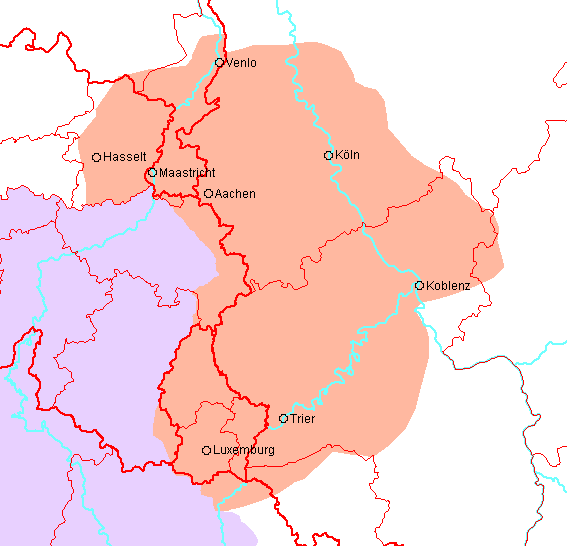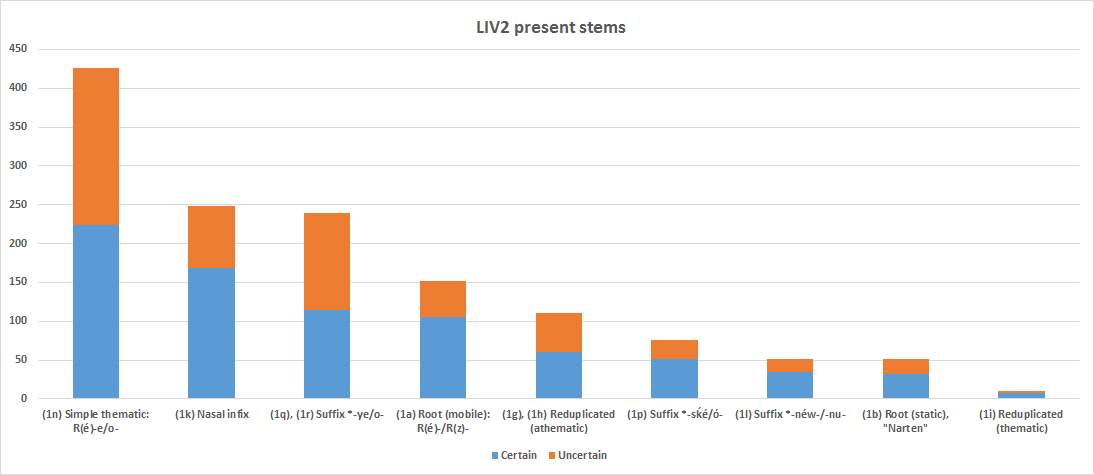|
Jay Jasanoff
Jay Harold Jasanoff ( or ) is an American linguist and Indo-Europeanist, best known for his ''h2e''-conjugation theory of the Proto-Indo-European verbal system. He teaches Indo-European linguistics and historical linguistics at Harvard University. Career Jasanoff received both his bachelor's degree (in 1963) and his Ph.D. (in 1968) from Harvard. After working for one year as an assistant professor at the University of California, Berkeley, he returned to Harvard to teach as an assistant professor and, later, associate professor from 1970 to 1978. He then moved to Ithaca, New York, to teach at Cornell University, where he was promoted to full professor in linguistics. He taught at Cornell for twenty years, including a number of years as the department chair. Since 1998 he has been the Diebold Professor of Indo-European Linguistics and Philology at Harvard, and was the department chair from 1999 to 2008. In his research, he has examined, in addition to the Indo-European verb, ... [...More Info...] [...Related Items...] OR: [Wikipedia] [Google] [Baidu] |
Mary Beckman
Mary Esther Beckman (born September 1953) is a Professor Emerita of Linguistics at the Ohio State University. Career Beckman received her PhD from Cornell University in 1984. She was a Postdoctoral member of the technical staff in "Linguistics and Artificial Intelligence Research" at AT&T Bell Laboratories, Murray Hill, NJ, before joining the linguistics faculty at Ohio State University in 1985. She has directed at least twenty-five PhD dissertations to completion at Ohio State University. Her early research focused on prosody and the development of the Tones and Boundary Indexes (ToBI) system of intonation transcription. More recently her work has focused on phonological disorders and child language acquisition. Perhaps her most significant contribution to linguistics is the fact that in 1987, together with John Kingston, she organized the first Laboratory Phonology conference at Columbus, Ohio. She served with Kingston as series editor for the Cambridge University Press seri ... [...More Info...] [...Related Items...] OR: [Wikipedia] [Google] [Baidu] |
Pitch Accent
A pitch-accent language, when spoken, has word accents in which one syllable in a word or morpheme is more prominent than the others, but the accentuated syllable is indicated by a contrasting pitch ( linguistic tone) rather than by loudness (or length), as in many languages, like English. Pitch-accent also contrasts with fully tonal languages like Vietnamese and Standard Chinese, in which each syllable can have an independent tone. Some have claimed that the term "pitch accent" is not coherently defined and that pitch-accent languages are just a sub-category of tonal languages in general. Languages that have been described as pitch-accent languages include: most dialects of Serbo-Croatian, Slovene, Baltic languages, Ancient Greek, Vedic Sanskrit, Tlingit, Turkish, Japanese, Norwegian, Swedish (but not in Finland), Western Basque,Hualde, J.I. (1986)"Tone and Stress in Basque: A Preliminary Survey"(PDF). ''Anuario del Seminario Julio de Urquijo'' XX-3, 1986, pp. 867-896 ... [...More Info...] [...Related Items...] OR: [Wikipedia] [Google] [Baidu] |
Balto-Slavic Languages
The Balto-Slavic languages form a branch of the Indo-European family of languages, traditionally comprising the Baltic and Slavic languages. Baltic and Slavic languages share several linguistic traits not found in any other Indo-European branch, which points to a period of common development. Although the notion of a Balto-Slavic unity has been contested (partly due to political controversies), there is now a general consensus among specialists in Indo-European linguistics to classify Baltic and Slavic languages into a single branch, with only some details of the nature of their relationship remaining in dispute. A Proto-Balto-Slavic language is reconstructable by the comparative method, descending from Proto-Indo-European by means of well-defined sound laws, and from which modern Slavic and Baltic languages descended. One particularly innovative dialect separated from the Balto-Slavic dialect continuum and became ancestral to the Proto-Slavic language, from which all Slav ... [...More Info...] [...Related Items...] OR: [Wikipedia] [Google] [Baidu] |
Ithaca, New York
Ithaca is a city in the Finger Lakes region of New York (state), New York, United States. Situated on the southern shore of Cayuga Lake, Ithaca is the seat of Tompkins County, New York, Tompkins County and the largest community in the Ithaca metropolitan statistical area. It is named after the Greek island of Ithaca (island), Ithaca. A college town, Ithaca is home to Cornell University and Ithaca College. Nearby is Tompkins Cortland Community College (TC3). These three colleges bring thousands of students to the area, who increase Ithaca's seasonal population during the school year. As of 2020, the city's population was 32,108. History Early history Native Americans lived in this area for thousands of years. When reached by Europeans, this area was controlled by the Cayuga tribe of Indians, one of the Five Nations of the ''Haudenosaunee'' or Iroquois League. Society of Jesus, Jesuit missionaries from New France (Quebec) are said to have had a mission to convert the Cayug ... [...More Info...] [...Related Items...] OR: [Wikipedia] [Google] [Baidu] |
Professor
Professor (commonly abbreviated as Prof.) is an academic rank at universities and other post-secondary education and research institutions in most countries. Literally, ''professor'' derives from Latin as a "person who professes". Professors are usually experts in their field and teachers of the highest rank. In most systems of academic ranks, "professor" as an unqualified title refers only to the most senior academic position, sometimes informally known as "full professor". In some countries and institutions, the word "professor" is also used in titles of lower ranks such as associate professor and assistant professor; this is particularly the case in the United States, where the unqualified word is also used colloquially to refer to associate and assistant professors as well. This usage would be considered incorrect among other academic communities. However, the otherwise unqualified title "Professor" designated with a capital letter nearly always refers to a full profes ... [...More Info...] [...Related Items...] OR: [Wikipedia] [Google] [Baidu] |
Bachelor's Degree
A bachelor's degree (from Middle Latin ''baccalaureus'') or baccalaureate (from Modern Latin ''baccalaureatus'') is an undergraduate academic degree awarded by colleges and universities upon completion of a course of study lasting three to six years (depending on institution and academic discipline). The two most common bachelor's degrees are the Bachelor of Arts (BA) and the Bachelor of Science (BS or BSc). In some institutions and educational systems, certain bachelor's degrees can only be taken as graduate or postgraduate educations after a first degree has been completed, although more commonly the successful completion of a bachelor's degree is a prerequisite for further courses such as a master's or a doctorate. In countries with qualifications frameworks, bachelor's degrees are normally one of the major levels in the framework (sometimes two levels where non-honours and honours bachelor's degrees are considered separately). However, some qualifications titled bachel ... [...More Info...] [...Related Items...] OR: [Wikipedia] [Google] [Baidu] |
Historical Linguistics
Historical linguistics, also termed diachronic linguistics, is the scientific study of language change over time. Principal concerns of historical linguistics include: # to describe and account for observed changes in particular languages # to reconstruct the pre-history of languages and to determine their relatedness, grouping them into language families (comparative linguistics) # to develop general theories about how and why language changes # to describe the history of speech communities # to study the history of words, i.e. etymology Historical linguistics is founded on the Uniformitarian Principle, which is defined by linguist Donald Ringe as: History and development Western modern historical linguistics dates from the late-18th century. It grew out of the earlier discipline of philology, the study of ancient texts and documents dating back to antiquity. At first, historical linguistics served as the cornerstone of comparative linguistics, primarily as a tool ... [...More Info...] [...Related Items...] OR: [Wikipedia] [Google] [Baidu] |
Proto-Indo-European Verbs
Proto-Indo-European verbs reflect a complex system of morphology, more complicated than the substantive, with verbs categorized according to their aspect, using multiple grammatical moods and voices, and being conjugated according to person, number and tense. In addition to finite forms thus formed, non-finite forms such as participles are also extensively used.Beekes, 18.1.1. The verbal system is clearly represented in Ancient Greek and Vedic Sanskrit, which closely correspond, in nearly all aspects of their verbal systems, and are two of the most well-understood of the early daughter languages of Proto-Indo-European. Basics Verb conjugation in Proto-Indo-European involves the interplay of six dimensions (number, person, voice, mood, aspect and tense) with the following variables identified under the ''Cowgill-Rix'' system, which is one of the methodologies proposed and applies only to certain subfamilies: Further, participles can be considered part of the verbal sys ... [...More Info...] [...Related Items...] OR: [Wikipedia] [Google] [Baidu] |
H₂e-conjugation Theory
The -conjugation theory adds a third conjugation to the two generally accepted conjugations of the Proto-Indo-European language (PIE), the thematic and athematic conjugations. The symbol ' refers to a particular example of a class of sounds known as "laryngeals" in the theory of PIE linguistics. History of the theory Proposed by Jay Jasanoff in 1979 and presented in its most elaborate form in Jasanoff (2003), the evidence for the "new" verbal conjugation in PIE is based on the attested existence of the similar ''ḫi''-conjugation in Hittite and other Anatolian languages. Whereas the Anatolian ''ḫi''-conjugation has traditionally been seen as an innovation in the Anatolian branch of the Indo-European family of languages, Jasanoff presents evidence and arguments to place it as a conjugation already established in PIE proper. The problem The following table serves to give an understanding of the problem that the theory tries to solve. The origin of the Hittite ''mi''-con ... [...More Info...] [...Related Items...] OR: [Wikipedia] [Google] [Baidu] |
Indo-European Studies
Indo-European studies is a field of linguistics and an interdisciplinary field of study dealing with Indo-European languages, both current and extinct. The goal of those engaged in these studies is to amass information about the hypothetical proto-language from which all of these languages are descended, a language dubbed Proto-Indo-European (PIE), and its speakers, the Proto-Indo-Europeans, including their society and Proto-Indo-European mythology. The studies cover where the language originated and how it spread. This article also lists Indo-European scholars, centres, journals and book series. Naming The term ''Indo-European'' itself now current in English literature, was coined in 1813 by the British scholar Sir Thomas Young, although at that time, there was no consensus as to the naming of the recently discovered language family. However, he seems to have used it as a geographical term, to indicate the newly proposed language family in Eurasia spanning from the Indian sub ... [...More Info...] [...Related Items...] OR: [Wikipedia] [Google] [Baidu] |
H₂e-conjugation Theory
The -conjugation theory adds a third conjugation to the two generally accepted conjugations of the Proto-Indo-European language (PIE), the thematic and athematic conjugations. The symbol ' refers to a particular example of a class of sounds known as "laryngeals" in the theory of PIE linguistics. History of the theory Proposed by Jay Jasanoff in 1979 and presented in its most elaborate form in Jasanoff (2003), the evidence for the "new" verbal conjugation in PIE is based on the attested existence of the similar ''ḫi''-conjugation in Hittite and other Anatolian languages. Whereas the Anatolian ''ḫi''-conjugation has traditionally been seen as an innovation in the Anatolian branch of the Indo-European family of languages, Jasanoff presents evidence and arguments to place it as a conjugation already established in PIE proper. The problem The following table serves to give an understanding of the problem that the theory tries to solve. The origin of the Hittite ''mi''-con ... [...More Info...] [...Related Items...] OR: [Wikipedia] [Google] [Baidu] |




